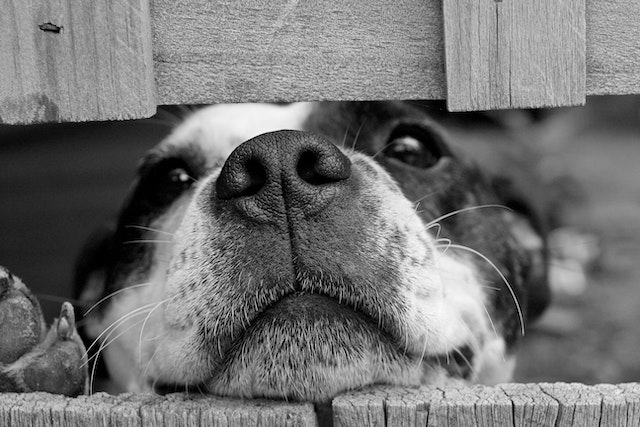As a devoted dog owner, one of your most important responsibilities is ensuring the health and well-being of your four-legged companion. Dogs rely on us for their physical and emotional needs, and it’s our duty to provide them with the best care possible. In this comprehensive guide, we’ll delve into the key aspects of maintaining your dog’s health, covering everything from nutrition and exercise to regular check-ups and grooming. By following these guidelines, you can help your beloved canine live a long, happy, and healthy life.
Proper Nutrition
A balanced and nutritious diet forms the foundation of your dog’s health. Here’s what you need to know about providing the right food for your furry friend:
1. Choose Quality Food
Selecting the right dog food is critical. Opt for a high-quality commercial dog food that meets your dog’s specific needs, which can vary based on their age, breed, size, and any underlying health concerns. Consult with your veterinarian for dietary recommendations tailored to your dog’s unique requirements.
2. Portion Control
Overfeeding can lead to obesity, which can contribute to various health problems, including joint issues and diabetes. Always follow the recommended portion sizes based on your dog’s age, weight, and activity level. Adjust portions as needed to maintain a healthy weight.
3. Fresh Water
Ensure that your dog has access to clean, fresh water at all times. Hydration is crucial for digestion, temperature regulation, and overall health. Regularly check and refill their water bowl, especially during hot weather.
4. Limit Treats
While treats can be an excellent training tool and a way to show affection, excessive treats and table scraps can lead to weight gain and digestive issues. Use treats in moderation and opt for healthy options like carrots or small pieces of lean meat.
Regular Exercise
Physical activity is vital for your dog’s physical and mental health:
1. Daily Walks
Regular walks provide exercise, mental stimulation, and an opportunity for your dog to explore their environment. The frequency and duration of walks depend on your dog’s age, breed, and energy level. High-energy breeds may require longer or more frequent walks.
2. Playtime
Engaging in interactive play with your dog is not only fun but also essential for their well-being. Toys like balls, frisbees, and tug ropes are excellent for active play. Playtime strengthens the bond between you and your dog and helps them expend excess energy.
3. Mental Stimulation
Mental exercise is just as crucial as physical activity. Use puzzle toys, interactive feeders, and brain-teaser games to challenge your dog’s cognitive abilities. Mental stimulation prevents boredom-related behavioral issues and keeps your dog engaged.
4. Socialization
Expose your dog to various people, animals, and environments from an early age to encourage socialization. This helps them become well-adjusted and confident adults. Attend puppy socialization classes and arrange playdates with other dogs to facilitate this process.
Regular Vet Check-ups
Routine veterinary care is essential for early detection and prevention of health issues:
1. Annual Check-ups
Schedule annual wellness exams with your veterinarian. These visits are essential for vaccinations, dental checks, and overall health assessments. Regular check-ups allow your vet to identify potential health problems before they become severe.
2. Vaccinations
Follow your veterinarian’s recommended vaccination schedule to protect your dog from preventable diseases. Vaccinations are a crucial part of preventive healthcare and can save your dog’s life.
3. Parasite Control
Administer regular parasite prevention treatments for fleas, ticks, and heartworms. Regular deworming is also essential to keep your dog free from intestinal parasites. Parasite control is not only essential for your dog’s health but also for your family’s well-being, as some parasites can be transmitted to humans.
4. Dental Care
Maintain your dog’s oral health by brushing their teeth regularly. Dental hygiene is often overlooked but is critical to preventing dental disease, which can lead to pain and infection. Schedule dental cleanings as recommended by your vet.

Grooming and Hygiene
Proper grooming is not only about aesthetics but also about preventing health issues:
1. Bathing
Bathe your dog as needed based on their breed, activity level, and coat type. Use a high-quality dog-specific shampoo to avoid skin irritation. Over-bathing can strip the skin of natural oils, so follow your vet’s recommendations.
2. Brushing
Regular brushing is essential for maintaining a healthy coat, reducing shedding, and preventing mats. The frequency of brushing depends on your dog’s coat type, with long-haired breeds typically requiring more frequent brushing.
3. Nail Trimming
Keep your dog’s nails trimmed to a proper length. Overgrown nails can cause discomfort and difficulty walking. If you’re unsure about how to trim your dog’s nails, seek guidance from your veterinarian or a professional groomer.
4. Ear and Eye Care
Regularly inspect your dog’s ears and eyes for signs of infection or irritation. Clean them as recommended by your veterinarian. Certain breeds are prone to ear issues, so extra care may be necessary.
Behavioral Health
Your dog’s mental and emotional well-being are just as important as their physical health:
1. Training
Provide consistent training and positive reinforcement to teach basic commands and desirable behaviors. Obedience training not only makes your dog more manageable but also strengthens your bond.
2. Social Interaction
Dogs are social animals and need regular interaction with their human family members. Spend quality time with your dog through play, cuddles, and relaxation. Loneliness and lack of social interaction can lead to behavioral problems.
3. Enrichment
Provide mental stimulation through puzzle toys, treat-dispensing toys, and interactive games. Mental stimulation prevents boredom and keeps your dog’s mind sharp.
4. Recognition of Stress
Learn to recognize signs of stress or anxiety in your dog, such as excessive barking, panting, pacing, or destructive behavior. Address these issues with the help of a professional if needed. Managing stress is essential for your dog’s overall well-being.
Safety and Preventive Measures
Ensuring your dog’s safety is paramount, whether at home or in various environments:
1. Secure Environment
Fence your yard or use a leash to prevent your dog from roaming unsupervised. A secure environment prevents accidents and keeps your dog safe from hazards.
2. Identification
Use a collar with an ID tag that includes your contact information. Consider microchipping for added security. In case your dog gets lost, proper identification can help reunite you with your furry friend.
3. Car Safety
Use a crate or seatbelt harness to secure your dog during car rides. This not only keeps your dog safe but also prevents distractions while driving.
4. Avoid Toxins
Keep harmful substances like chemicals, medications, and poisonous plants out of your dog’s reach. Dogs are curious, and their exploration can lead to accidental poisoning. Store these items securely.
Love and Attention
Never underestimate the power of love and attention in maintaining your dog’s overall health and happiness:
1. Affection
Dogs thrive on love and affection. Shower your dog with affectionate gestures like petting, cuddling, and praise. Regular displays of affection strengthen your bond and reassure your dog that they are loved.
2. Quality Time
Spend quality time with your dog by engaging in activities they enjoy. This can include playing fetch, going for hikes, or simply sitting together and enjoying each other’s company. Quality time builds a strong emotional connection.
3. Regular Communication
Pay close attention to your dog’s behavior and body language. Regularly communicate with your dog to understand their needs and feelings. If you notice any changes in behavior, appetite, or energy levels, consult your veterinarian promptly. Early detection of health issues is crucial for effective treatment.
By diligently following these guidelines and providing your dog with the proper care, nutrition, exercise, and attention, you can ensure their health and happiness throughout their life. A healthy and content dog is not only a wonderful companion but also a source of joy and comfort for you and your family.

